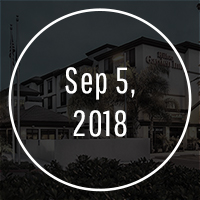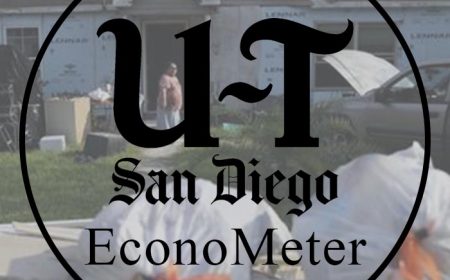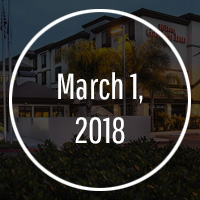Hospitality Forecast – Q1 2011
With no new supply, increasing demand, and growth in average rate, we expect the next several years to be very strong.
Nationally, Smith Travel Research (STR) reports that supply grew 2.2 percent during 2010, and demand increased 6.6 percent. They further project the industry will end 2011 with increases in all three key metrics: Occupancy is forecast to rise 1.4 percent to 57.9 percent; Average Daily Rate (ADR) is expected to be up 3.9 percent to US$101.55, and Revenue per available room (REVPAR) is projected to rise 5.3 percent.
With all the key metrics like Consumer Price Index, Gross Domestic Product, Industrial Production and even unemployment headed in the right direction, the hotel industry, which closely follows these metrics is beginning an upward cycle as we head toward the end of February. We expect the next several years to be very strong for several reasons; no new supply, increasing demand and growth in average rate.
Companies anticipate a higher level of activity and business travel volume started to heat up this year, leading to recovery of transient occupancy levels in hotels. “Data never lie,” according to Jan Freitag, Vice President of Global Development for STR. Mr. Freitag spoke to a group of over 2900 attendees at last month’s Americas Lodging Investment Summit (ALIS) in San Diego.
In 2008, total U.S. RevPAR was down 2 percent followed by a rather significant decline of 16.7 percent in 2009. In 2010, RevPAR was up 4.5 percent, and as previously mentioned, STR forecasts RevPAR growth in 2011 to be + 5.3 percent. When looking at the data in more detail, it becomes obvious that the occupancy decline was driven in part by the increase in new rooms.
Freitag has been preaching to us as hoteliers to stop discounting. He asks, “do frequent business travelers who are facing a travel moratorium handed down from the executive office really care what the room rate of their favorite hotel is, if they have strict orders not to travel? Or does the leisure traveler, not sure about his own economic picture or even his own unemployment situation, take a vacation – even if it is heavily discounted – when the expected bill at check-out is the equivalent of a paycheck, or more? It stands to reason that the discounts only entice the travelers who would have taken a trip anyway and who were probably prepared to pay higher prices.”
Group Business
Group ADRs continue to lag. Historically, ADRs for group rooms (rooms sold in increments of 10 or more) are lower than ADRs for transient rooms (rooms sold in increment of between 1 and 9). The transient ADR is often used as a starting point for group room negotiations. But during a recession or a depressed economic environment, transient rates are discounted much more heavily and more quickly than group rooms. Hence, the outcome is that group rooms turn out to be more expensive than transient rooms.
Group rooms are obviously contractually guaranteed, and in a declining market, discounting those group rates makes little sense for the hotelier. However, the ability to book a transient hotel room on a third-party site for less than the group block rate creates challenges for the hotelier and meeting planner alike when the time of the conference comes around. With limited new room supply on the horizon and general macro economic trends improving, existing hotels can make the most of the groups that are looking for venues in the future – if the hotels keep their availability open.
Improving fundamentals are expected to combine with a broadening of hotel investment activity to drive values higher over the period 2011 to 2014. Accelerated average rate growth is expected to result in exponential increases in hotel net income levels as compared to those recorded at the low point in the cycle, which in turn will support significant value increases.
Individual time horizons will be driven by knowledge of the market and operating skills as well as the current loan status of individual assets. Value creation is made by buying at the right time. Moreover, operating fundamentals are critical. An explosion of transactions is fast approaching due to the maturity of loans. While values are not quite predictable in the industry due to volatility of financial performance, risks of inflation, terrorism, and the rate of growth of economic fundamentals, net operating income (NOI) does in fact drive value! So now is the time to get to work on “NOI!”
San Diego
New supply in San Diego is expected to be less than 1 percent per year in 2011 and 2012. The only full service hotel to break ground this year is the Hilton Carlsbad Beach. If demand grows by the 3 percent average of the last 30 years, occupancy will move up aggressively in 2011 again due to the low new supply levels. Following a two-year recession, there is unusually high “pent-up demand” and San Diego is no exception.
“The good news is that recovery is driven by the luxury and upper end of the market and that ADR growth will be strong in 2011, since in a recovering market most hoteliers take their cues from the rate leader,” according to STR’s Freitag. The bad news could be that hoteliers lock in their group rates for the next few years based on the most recent, low ADRs, and then come to the realization that they did not maximize revenues when the groups actually come to stay in their hotels in 2011 or 2012.
According to the firm CIC Research, the San Diego visitor industry finished the year at 29.9 million visitors and total visitor spending of almost $7.1 billion. This represented about a 1 percent increase in visitor volume and a 2 percent increase in visitor spending. A strong increase in overnight visitors (+4.5 percent) was recorded for the year. Room nights sold increased 10.0 percent in December compared to the prior year. Hotel room ADR also increased about 4.4 percent in December.
The hotel ADR increased in five of the last six months of 2010 and this is an important trend as the hotel industry struggles to regain financial health. The first part of 2011 is off to a strong start as well. Paramount to our success an an industry will be our ability to deliver some strong growth in ADR this year.
Trends
One of the most popular sites on the internet is Groupon.com. Discount hunters work together to make deals happen. In fact people are so into savings that it was inevitable that this would spill over into the lodging business. Have you joined Jetsetter, the private sale site that offers high end product at deep discounts? How about Sniqueaway.com, the free, members-only private sale site run by Expedia?
These sites portend the future of how consumers may shop for travel. The human psyche loves a good deal and Jetsetter, Sniqueaway and others use the exclusivity element to make deal hunting a badge of honor. “Its cheap chic meets travel,” according to Glenn Haussman of Hotel & Motel Management magazine and hoteliers need to be wary of the emergence of these sites. Revenue managers beware, these sites could put downward pressure on hotel rates unless we manage rates carefully.
OTAs
American Airlines is currently fighting a battle as it tries to extricate itself from deals it feels is a losing proposition. Upset by fees, they ended their agreement with Orbitz late last year. Expedia has followed suit and has dropped the airline off its systems. If American can move forward without third party aggregators, will hoteliers try the same thing?
As I see it, we are all in this together. OTAs can bring lots of business to our doors…we just need to work together with them and be able to shut them off or reduce their availability when our own channels take care of themselves. I call it quid pro quo…they help us in times of need so we should give them some inventory in the good times. It’s like the soccer teams I accommodate for a tournament during July in San Diego. Why? Because, they provide room demand in November as a quid pro quo if we give them availability in July.
Apps
The world is going nuts for mobile and hotel companies need to compete in this space. Remember, we need to be where our customers are. More and more that means we must have a presence on that device in their hand. According to comScore, about 26 percent of U.S. smart phone users said an Android device was their primary phone in the three months ending in November, compared with 25 percent using Apple Inc.’s iPhones, comScore said. BlackBerry maker Research In Motion Ltd. still held the first-place spot, but its share of users declined to 33.5 percent in this survey. The bottom line…everybody has a smart phone so let’s allow users to find us with a simple click. Our hotel apps need to offer location, prices, remote check-in and submissions for special requests…these are but a few of the app trends.
Finance
Since 2003, roughly $110 billion of lodging mortgage debt has been originated and securitized into Real Estate Mortgage Investment Conduits (REMICs) in the United States, collateralized by slightly over 18,000 lodging properties. To put this number into greater context, there are just over 51,000 hotels in the U.S. according to the Smith Travel Research database. Then, on September 2, 2008, the Lehman Brothers crash came and the music stopped. It is obvious that this financing market has clearly headed south since that fated date.
At present, according to analyst Michael Sullivan, there are estimated to be roughly $66 billion of hotel mortgage debt still held in the universe of REMIC trusts. Of the roughly $66 billion in currently outstanding hotel mortgage debt, over $17 billion is now in Special Servicing, and of that amount, nearly $13 billion is listed as +60 days delinquent in debt service payments. We may still see many more foreclosures and bankruptcies in 2011 as these loans come due prior to the strong hotel market being able to save them.
So who are the buyers today? In 2010, public and private Real Estate Investment Trusts (REITs) spent more than 10 times what they spent in 2009 according to Lodging Econometrics. They will continue to spend alongside opportunity funds, foreign buyers and hotel investment companies this year. The targets in 2010 were largely distressed assets. While that pattern will continue, it is clear that most savvy investors know that the market has hit bottom and yield requirements will be lower going forward.
Conclusion
Nothing has really changed in this decade despite the “great recession.” The industry is cyclical and we are in for a good ride over the next several years. Those who have emerged from the past two very difficult years intact will survive and thrive. Those who are still way overleveraged and in markets that are not recovering quickly should seek help quickly. Those who feel lost because the industry has become both more scientific and faster moving, hire some new talent.
Yes, the internet has opened the industry up to the world. But Conrad Hilton was still right…location, location, location still matters. The only difference is that location is not limited to your real estate. So find a place in cyber space and make sure you are ready to move when the clouds come in…the only thing that changes more quickly than technology is the weather.







